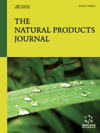
Full text loading...
We use cookies to track usage and preferences.I Understand

Urolithiasis is a condition where kidney stones exit through the renal pelvis, causing chronic pain. Kidney stones are usually formed due to the deposition of calcium and oxalate crystals. It is known to be a prevalent health condition that affects a large portion of the global human population. Inopportunely, no medications that show effective prevention of urolithiasis are currently available. Extensive research has highlighted the significant role of commensal microbes in regulating host oxalate homeostasis and oxalate-associated pathological conditions. However, limited knowledge of the pathophysiology of urolithiasis poses difficulties in designing target-based therapeutics. Growing evidence suggests the role of gut microbiota and probiotics in helping reduce the disease burden. Understanding the intricate relationship between gut-associated microbiota and its host symbiosis reveals the therapeutic potential of specific bacteria to prevent and/or treat such metabolic diseases. Oxalobacter formigenes, a bacterium, is considered crucial for degrading dietary oxalates through the oxalyl-CoA decarboxylase enzyme. The absence of this enzyme leads to hyperoxaluria and calcium oxalate urolithiasis, underscoring the impact of microbiota on kidney stone formation. Studies on the urinary microbiome, including those focusing on Oxalobacter formigenes, Lactobacillus, Bifidobacterium, Eubacterium lentum, Enterococcus faecalis, and Escherichia coli, elucidate the metabolism of dietary oxalates, providing a novel approach to kidney stone management. This review aims to consolidate the present information on the urinary microbiome, aetiology, pathogenesis, and disease prevention.

Article metrics loading...

Full text loading...
References


Data & Media loading...